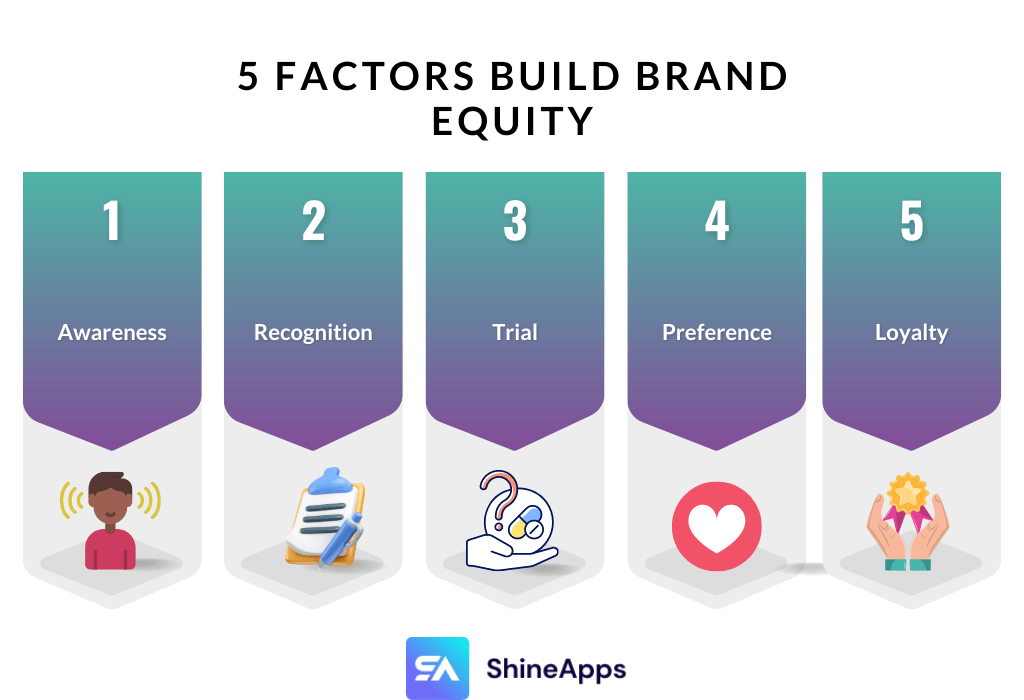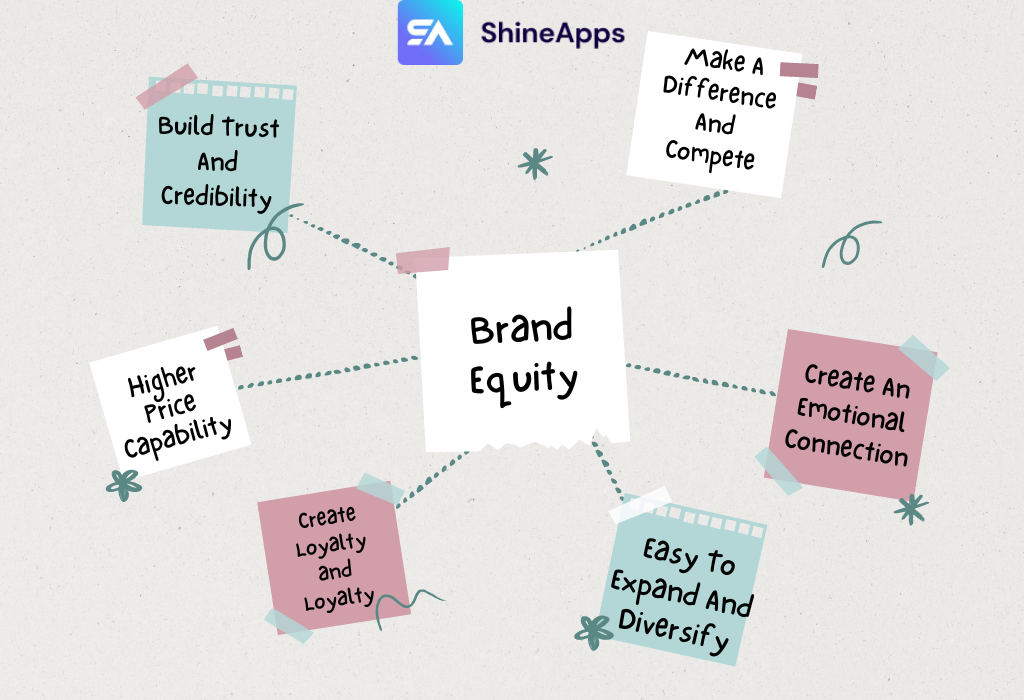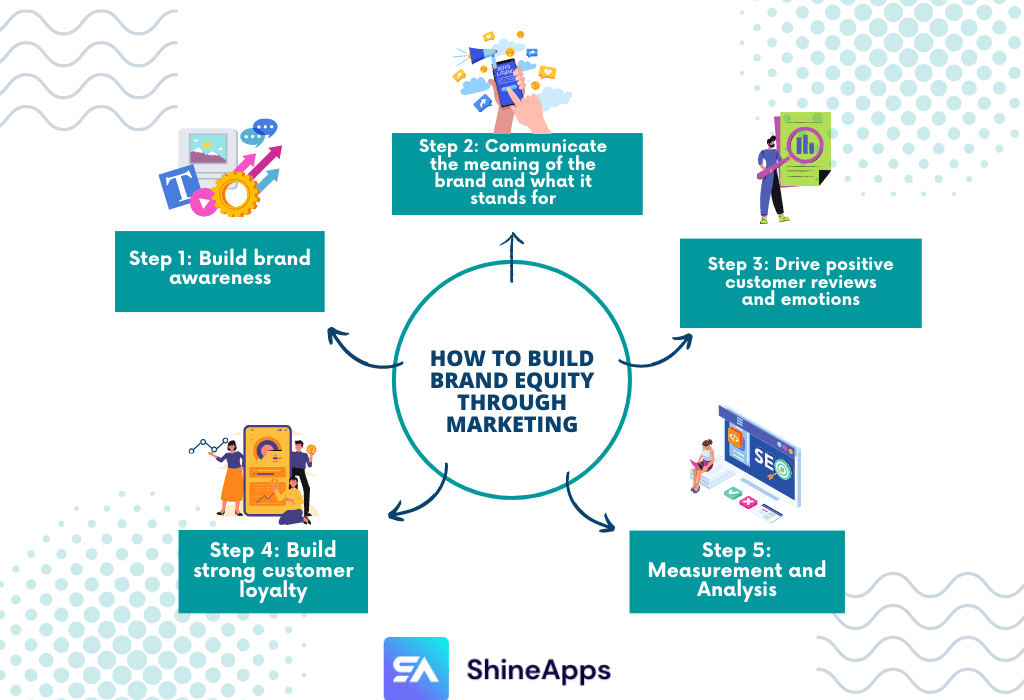Brand Equity is an important concept in the world of business and marketing. It is an invisible force that helps brands attract, engage, and create trust with customers. In this post, let’s learn about the concept of Brand Equity, its importance, and how to build Brand Equity through marketing.
What is Brand Equity?

In today’s society, it is not difficult to see the invisible but extremely important presence of strong brands. We easily remember a featured logo or identify the lovely slogan of a certain brand. What’s interesting, however, is that a brand is not simply an image or a word. It is the entire emotion and value that the brand brings to the customer. That is Brand Equity – the basic element that builds the foundation for the success of a brand.
Brand Equity is an important concept in the fields of business and marketing. It is equivalent to evaluating the added value that a brand brings to its product or service based on customer perception and evaluation. When Brand Equity increases, the brand will easily attract and retain customers and create a superior competitive advantage in the market.
What Factors Build Brand Equity?

Brand equity is formed and developed as a result of the customer’s brand awareness process. That process usually involves the relationship between the customer and the brand, which is naturally formed through the following factors:
- Awareness: The brand is introduced to the target audience, usually through advertising.
- Recognition: Customers gradually become familiar with the brand and begin to recognize it on supermarket shelves.
- Trial: Now that your brand is really in the customer’s mind, they will try your product/service to get preliminary evaluations.
- Preference: When customers have a good experience when using a product/service, they will tend to choose your brand for the following use.
- Loyalty: After a series of good experiences they receive, users not only refer others but also stay loyal to using your brand’s products/services. And every time they need to do something, they will think of your brand first.
The Importance Of Brand Equity

Brand Equity is important because it plays a decisive role in the success and sustainability of a brand in a competitive market. It is considered the “secret weapon” to help the brand succeed and survive in the hearts of customers. Imagine your brand as a loyal companion, always with you and supporting you at all times. That’s the importance of Brand Equity!
Build Trust And Credibility
When a brand has strong Brand Equity, this creates a positive impression in the minds of consumers, which in turn builds trust and credibility.
Brand Equity helps brands make a strong impression in the minds of customers through the positive experiences they have had with that brand’s products or services. When customers feel satisfied and trusted with a brand, they are more likely to return to buy again next time and become loyal customers.
Create An Emotional Connection
Brand Equity helps brands build a unique story and their own values, making customers feel familiar and connected with the brand. Customers not only see a brand as a product or service, but they also feel the soul and emotion behind it.
A brand with strong Brand Equity demonstrates loyalty and love from customers. They don’t just buy a product once and forget it; they become dedicated resellers, willing to suggest and share with others a great experience with the brand.
Make A Difference And Compete
Brand Equity helps brands define and position themselves in the minds of customers. When a brand has a good reputation and exceptional value, it easily sets itself apart and stands out from the crowd of competitors.
In addition, it also helps the brand create a unique image and identity in the hearts of customers. Logos, slogans, and other visual elements make the brand stand out and are easy to remember.
These create competitive advantages and help brands attract attention and favor from customers, thereby achieving success in today’s challenging market.
Higher Price Capability
When Brand Equity is strong, brands can sell products or services at higher prices than competing brands. Customers are willing to pay higher prices because they trust the quality and value that the brand brings.
Brand Equity helps brands create a sense of exclusivity and celebration in the hearts of their customers. Customers tend to want to experience and own something unique, which supports higher prices for a brand’s products or services.
Create Loyalty and Loyalty
Brand Equity plays an important role in creating loyalty and loyal customers for a brand. When a brand has strong Brand Equity, it is easier for customers to build special trust and emotional relationships with the brand. They don’t just buy once and forget, but become dedicated resellers of the brand, returning to purchase it and recommending it to relatives and friends.
Businesses with brand equity easily maintain a loyal customer base. Customers keep coming back to buy again because they know the brand offers reliable quality and value. This helps the brand maintain and increase the number of loyal customers, creating stability and sustainable development in the market.
Easy To Expand And Diversify
Brand Equity helps brands build a reputation and gain trust from customers, thereby creating a competitive advantage in the market. Once the brand has been recognized and trusted, the expansion or diversification of services and new products will attract interest from existing and potential customers.
It also creates trust among partners and investors. When the brand has a reputation and proven value, partners, and investors are willing to cooperate and invest in it.
How to build Brand Equity through Marketing?

By using the right marketing strategies, brands can build strong Brand Equity, thereby creating connection and trust with customers, and enhancing differentiation and competition in the market. To build effective Brand Equity, you can apply the following strategies and activities:
Step 1: Build brand awareness
The first step in modelling brand equity is to create brand awareness. Let customers become more familiar with your brand by using brand elements that can be easily interacted with, such as:
- Logo: The brand’s logo should be displayed on packaging, website profile photos, Facebook, Instagram, etc. so that customers can easily see and remember.
- Website: This is the ideal vehicle for communicating with customers. Through the website, you can inform customers about your business and convey meaningful messages, stories, and brand characteristics.
- Blog: Blogs are a great place for content marketing, can help build strong, trusted relationships with customers, and are also very helpful for SEO.
- Social Media: Give your brand a chance to appear on social media. This is an effective and affordable marketing channel through story posts and daily updated newsfeeds.
Step 2: Communicate the meaning of the brand and what it stands for
If you want your customers to see your brand the way you want them to, the most important thing is to develop your brand story and brand personality. These two factors will help you come up with marketing methods and strategies to exploit brand equity in the future.
In the case of a business just starting, all details, including the color of the logo, and the font used in posts, labels, and packaging, need to be carefully considered as it significantly impacts the customer’s perception.
Step 3: Drive positive customer reviews and emotions
To develop brand equity, the brand needs to win the hearts of customers. Thus, new customers are loyal and willing to recommend this brand to everyone around them. At the same time, they are also the ones who give good reviews about the brand, helping businesses create a competitive advantage over other brands.
The positive emotions of customers are happiness, satisfaction, excitement, and trust in the brand. When brands can maintain the positive emotions of customers, they can win the battle between brands in the same field.
Step 4: Build strong customer loyalty
You should always strive to build and maintain a relationship between your brand and your customers. When this relationship becomes stronger and more developed, it will make customers more loyal to the brand. They may be willing to buy your brand’s products again and again.
Design special promotions and incentives for loyal customers. Customers will feel more valued and devoted to your brand.
Step 5: Measurement and Analysis
Evaluate the effectiveness of marketing campaigns and consider areas for improvement. This helps you optimize your Brand Equity strategy.
To do this, you can do market research to understand the opinions and feelings of your customers about your brand. This includes surveys, interviews, customer feedback, and comparisons with competitors.
You also need to regularly compare your Brand Equity with that of your competitors to understand your position in the market. This helps you identify your brand’s strengths and weaknesses.
Examples of Positive Brand Equity

Tylenol is a brand with strong brand equity that rates higher than many others in the pain reliever category. According to research conducted by EquiTrend, customers trust Tylenol more than many other brands.
Porsche is another example of positive brand equity. Because of its excellent quality car parts and use of unusual materials, it has built a strong brand image in the automobile sector. It is one of the top three brands in the US.
Examples of Negative Brand Equity

Some famous brands have lost their brand value when entangled in other actions that make a bad impression on customers. Goldman Sachs, which has a large brand value, lost its brand value when it was associated with the financial crisis.
BP faced removal from the top 100 brands shortly after the Deepwater Horizon oil spill. Volkswagen’s reputation was damaged when it had to recall up to 11 million diesel vehicles equipped with faulty emissions testers. It is estimated that they have lost $10 billion in brand value due to this emissions scandal.
To Sum up,
Brand Equity is an important factor in building trust, confidence, and loyalty among customers towards the brand. Therefore, it is necessary to build brand equity properly and effectively. Above is the entire knowledge of Brand Equity that ShineApps brings to you. Hope you will find the right strategies and pricing for your brand.




